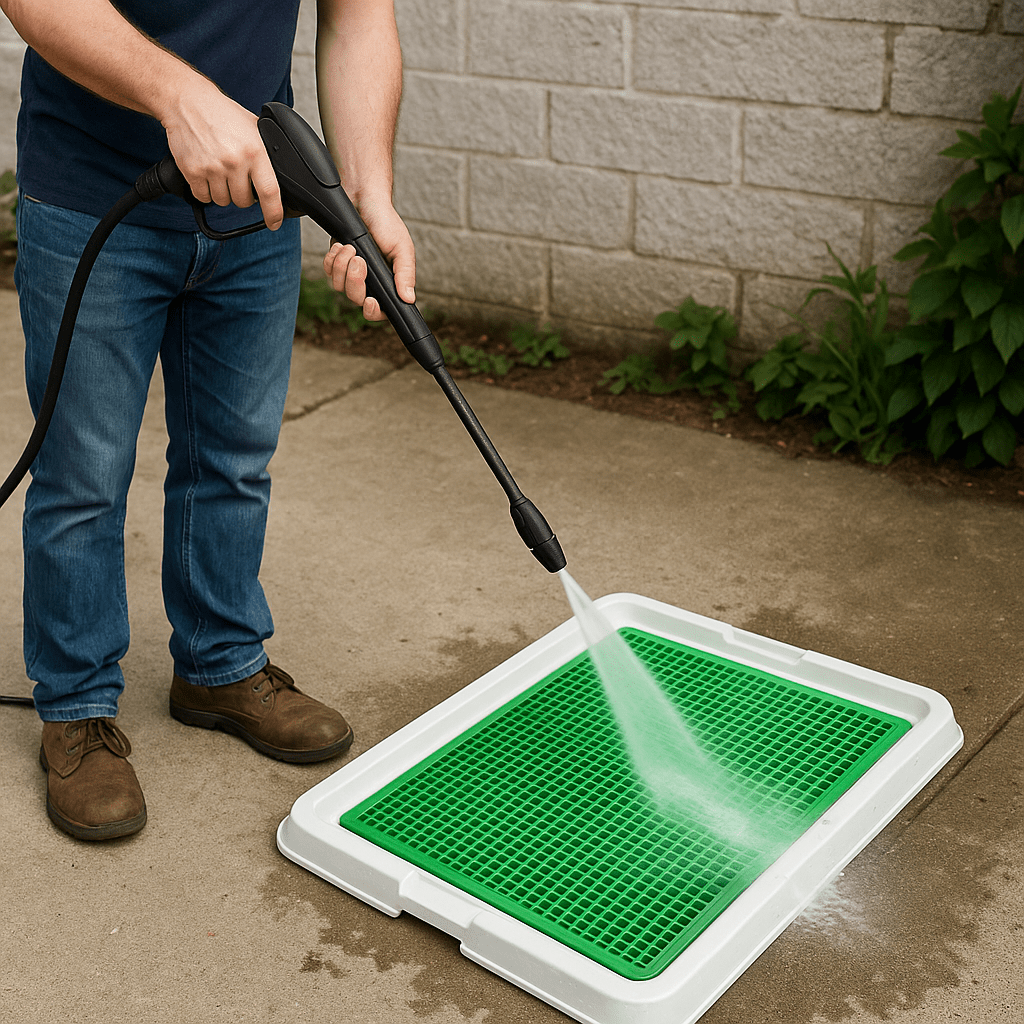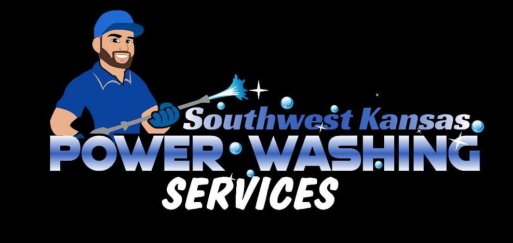Can You Power Wash a Plastic Pee Pad Holder?

Yes, you can power wash a plastic pee pad holder — but only if you do it carefully. These holders are often made from lightweight, molded plastic that can be surprisingly delicate. Power washing can save time and clean more effectively than hand scrubbing, but the wrong technique could crack or warp the tray, or even shorten its lifespan. Done correctly, though, power washing is a great way to eliminate odor, built-up grime, and bacteria from those hard-to-clean corners.
Let’s break down exactly how to do it — and when you probably shouldn’t.
How to Properly Power Wash a Plastic Pee Pad Holder (Step-by-Step Guide)
If you’ve decided to power wash your pee pad holder, it’s important to approach it like you would a car bumper — not a concrete driveway. Use low pressure, the right nozzle, and keep some distance.
Start by removing the pee pad and shaking off any hair, solid debris, or dried urine crystals. You want to avoid blasting caked-on waste with high-pressure water right away, as that can splatter bacteria and create a mess. Give it a quick rinse with a garden hose or in your bathtub if it’s particularly dirty.
Use a power washer set to a maximum of 1200 PSI — any higher and you risk damaging the plastic. Attach a 40-degree white nozzle tip, which gives you a wide spray that’s gentler on delicate surfaces. Hold the nozzle 2 to 3 feet away and use smooth, sweeping motions. Never concentrate on one area for too long.
Make sure to avoid the seams, locking clips, or mesh grid components — these are often the weakest points. Once cleaned, let the holder air dry in direct sunlight if possible. This not only helps dry the surface quickly but also naturally kills bacteria.
Pre-Cleaning Steps Before Using a Power Washer
Before you power wash, always remove the pad and waste, inspect for cracks or brittleness, give it a light rinse, and choose an open area with good drainage for cleaning.
Natural Deodorizing Tricks After Cleaning
After power washing, you can spray the holder with a pet-safe vinegar solution or enzyme cleaner to neutralize any lingering odors. Let it sit briefly, rinse lightly again, and allow it to fully dry before reuse.
Signs Your Pee Pad Holder Is Too Fragile for Power Washing
Not all plastic pee pad holders are made the same. If yours feels lightweight, bends easily, or already has small cracks, it may not hold up to even light power washing. Older trays exposed to sunlight for months or years often become brittle and more prone to cracking.
If the tray flexes significantly when you press on it, or parts of it have become discolored and chalky, stick to gentler hand cleaning methods. A ruined holder means replacing the whole setup — so err on the side of caution.
Common Mistakes to Avoid When Power Washing Plastic Pee Pad Holders
Power washing can make your life easier, but not if you make these common mistakes:
Using too much pressure (over 1200 PSI), choosing the wrong nozzle like a red or zero-degree tip, holding the wand too close, blasting delicate clips or edges, or applying bleach-based cleaners can all result in damage. Avoid these pitfalls to keep your holder functional and safe for your pet.
Risks of Power Washing a Plastic Pee Pad Holder Incorrectly
Improper technique can do more harm than good. You may crack or warp the plastic, especially at stress points. Using hot water may soften or melt the tray. Blasting clips or seams can dislodge critical parts. If harsh cleaners aren't rinsed properly, they can leave behind chemical residue that poses risks to pets.
Lastly, overuse of power washing can weaken the plastic over time. These risks are easy to avoid with proper prep and a gentle touch.
Power Washing vs. Hand Washing: Which Method Is Best for Your Pee Pad Holder?
When to Choose Power Washing
Power washing is ideal for deep cleans, built-up messes, or when managing multiple trays in busy pet homes or shelters. It’s faster and more thorough if your holder is sturdy and intact.
When Hand Washing Is the Safer Option
Hand washing is better for fragile holders or routine upkeep. Use warm water, mild soap or vinegar, and a soft brush. It takes longer but carries less risk of damage and is great for indoor cleaning.
Final Thoughts: Is Power Washing the Right Method for You?
Power washing can be a time-saving and effective way to deep-clean your plastic pee pad holder — if you use the right technique. Low pressure, wide spray, and proper handling are key. For sturdy, well-made holders with deep grime, it’s a great option.
That said, if your holder is showing signs of wear, or you just want to play it safe, hand washing with warm water and enzyme spray works just as well with a bit more elbow grease. Ultimately, keeping your holder clean — however you do it — is essential for a hygienic, odor-free space for you and your pet.
FAQs About Cleaning Plastic Pee Pad Holders
How Often Should You Deep Clean Your Pee Pad Holder?
At least once a week if used daily. Light rinsing between pad changes is recommended to prevent buildup.
Can I use bleach on my pee pad holder?
It’s not recommended. Bleach can weaken the plastic and is potentially unsafe for pets if residue remains.
Will power washing remove all the odor?
It removes surface grime, but you’ll need an enzyme-based cleaner or vinegar rinse to eliminate deep-set odors.
Can I wash it in a dishwasher?
Only if the product is labeled dishwasher-safe. Most aren’t built for heat and detergent exposure.
What nozzle is best for power washing plastic?
A 40-degree (white) spray tip is safest. Never use narrow or high-pressure nozzles.
How do I know if it’s too fragile to power wash?
Look for signs like cracking, chalky texture, or bending under light pressure — all signs to avoid power washing.
CONNECT WITH YOUR LOCAL POWER WASHING SPECIALIST TODAY!
